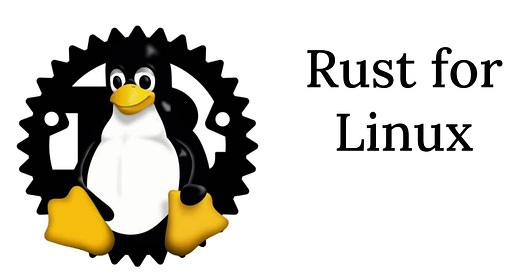Rust in the Linux Kernel: Controversy and a Safer Future
Introduction
The recent debate surrounding the integration of Rust into the Linux kernel has become one of the hottest topics in the open‐source community. This controversy is not simply about adding a new programming language to an established project; it is a clash of philosophies, technical priorities, and visions for the future of one of the world’s most critical pieces of software.
The Case for Rust Integration
Proponents argue that Rust’s modern features—its strong memory safety guarantees, expressive type system, and tooling improvements—can significantly reduce the number of vulnerabilities that stem from common memory errors in C. They point to the fact that a large percentage of security flaws in the Linux kernel have historically been attributed to memory safety issues, making Rust a promising candidate for writing new code and even replacing some legacy components.
Historical Context and Current Developments
The integration of Rust into the kernel is relatively recent. Initial support was added in Linux 6.1, and since then, the effort known as Rust for Linux has gradually evolved. Its supporters believe that even a partial migration to Rust can lead to a more secure and maintainable kernel over the long term. In parallel, several experiments have demonstrated that new drivers written in Rust can potentially eliminate whole classes of bugs, allowing developers to focus on deeper logic and performance issues rather than fighting against the limitations of a language prone to subtle memory errors.
Controversies and Technical Concerns
However, the path to integrating Rust has not been smooth. Senior maintainers have raised serious concerns about the implications of mixing languages within the kernel’s codebase. One notable voice, Christoph Hellwig, has been vocally critical, arguing that introducing Rust not only complicates the development process but also risks the maintainability of an already complex system. His comments have been particularly pointed in discussions about patches intended to allow Rust-written device drivers to interact with existing C APIs, such as the DMA allocation functions. Detractors worry that the resulting cross-language codebases might create hidden dependencies and obscure the clarity of the kernel’s core functionality.
Community Response and Policy Developments
In response to these challenges, influential figures in the community, including Greg Kroah-Hartman and even Linus Torvalds himself, have taken steps to clarify the vision for Rust in the kernel. Torvalds has emphasized that the Linux development process must evolve to accommodate new ideas, even if it means merging code against the objections of some maintainers. This stance reflects a broader philosophy that innovation should not be stifled by fear of change, and that the benefits of a memory-safe language could outweigh the short-term inconveniences of maintaining a multi-language system. A significant development in this ongoing debate has been the establishment of a Rust kernel policy. Drafted by leaders of the Rust for Linux project, this policy outlines the framework for how Rust code should be integrated into the kernel and sets guidelines on maintaining clear boundaries between C and Rust code, handling updates, and ensuring that critical system components remain robust.
Implications for the Future of Linux Kernel Development
The controversy is not merely academic; it has practical consequences for the community. The debates have led to resignations and a rethinking of long-held positions among developers. Some maintainers, disillusioned by what they perceive as an erosion of traditional development practices, have even stepped away from projects like Asahi Linux. Meanwhile, advocates of Rust see these developments as necessary growing pains on the road to a more secure and resilient kernel. They argue that the initial challenges are temporary and that the long-term benefits—fewer memory safety bugs, more robust drivers, and a safer operating system overall—justify the disruption.
Conclusion
Ultimately, the discussion over Rust in the Linux kernel encapsulates the tension between stability and innovation. It forces the community to confront difficult questions about legacy code, language evolution, and the cost of progress in a system that underpins billions of devices worldwide. As the debate continues, all eyes are on the next set of kernel releases and the incremental steps that will determine whether Rust becomes a permanent and transformative component of Linux or remains a contentious experiment.
References
Linux royalty backs adoption of Rust for kernel code – The Register
After Recent Kernel Drama, Rust for Linux Policy Put in Place – It's FOSS
Linux developers argue over Rust in kernel – Techzine Global
Rust for Linux – Wikipedia
The Rust Debate: Enhancing Security and Stability in the Linux Kernel – Linux Security
Rusty Linux: Advances in Rust for Linux Kernel Development – arXiv




